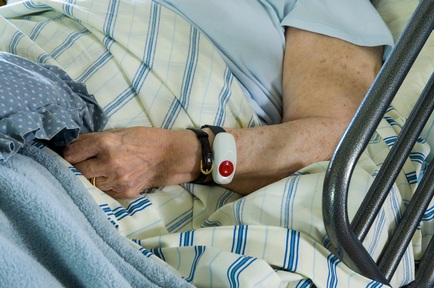Care minister accused of 'besmirching' reputation of care homes
The Registered Nursing Home Association has accused care minister Norman Lamb of “besmirching the reputation of care homes across the country with ill-chosen, over-generalised comments likely to create a negative impression of the quality of service they provide”.
![]() Norman Lamb, Minister of State at the Department of Health
Norman Lamb, Minister of State at the Department of Health
Recently, Mr Lamb called for care homes to let residents personalise their rooms with their own curtains, duvets and furniture, telling The Telegraph that care providers must make an effort to “civilise” care homes which he said can be “austere and alien”.
Mr Lamb said to The Telegraph: “The whole focus needs to be on personalising care as much as possible.
“A willingness to take a bit of furniture, bedspreads, curtains, whatever it might be that creates that link can be incredibly important in civilising care homes and making them a real home for someone, rather than an austere alien environment.”
Under a new inspection regime, which comes into force in October, care homes will be inspected by the Care Quality Commission (CQC) on how well they create a ‘real sense of an individual’s home’.
However, Frank Ursell, chief executive of The Registered Nursing Home Association (RNHA) said a survey carried out in 2011, revealed that “nearly nine out of ten (86 per cent) of the sample interviewed told researchers that they had a say in arranging their own room. In addition, almost all of them (98 per cent) said they felt comfortable and safe in their care home.”
The survey, which was carried out by the Personal Social Services Research Unit at the University of Kent explored what people expected before they went into a care home and what actually happened to them once they were in residence.
Many care homes 'do allow' residents to personalise rooms
Mr Ursell said: “Of course we in the care home sector want our residents to feel at ease. The vast majority of care home managers and staff strive constantly to achieve this. Personalisation of care is one of our key objectives.
“Subject to practical considerations, including fire safety regulations, many care homes do allow individuals to bring in their favourite furnishings and to personalise their own rooms. But there are necessarily limits, such as cost and the availability of space, on how far this can go in an environment where as many as forty or fifty people are being cared for.”
He added: “The minister must also bear in mind that the Care Quality Commission’s own guidelines lay down requirements that care homes must follow with regard to the safety of fixtures, fittings and furniture, which need to be designed in such a way as to minimise the risk of harm.
“Coming on top of the CQC chairman’s recent proclamation that his organisation expects to be more robust in taking care homes to court in future, the minister’s statement looks like another attempt to put our sector in the firing line. Perhaps the Government should look a little closer to home and take account of the massive cutbacks in public expenditure on services for older people. It is certainly not a question of Mr Lamb practising what he preaches.”
Concern over different approaches to hospitals and care homes
Mr Ursell is also concerned at what he feels are different strategies being pursued with regard to NHS hospitals and care homes judged inadequate by CQC inspectors.
From October, care homes and home care providers will be rated by the CQC. The new special measures regime will see failing care providers put into special measures and given six months to improve services or action could be taken to shut the care service down.
However he said: “There is little or no talk in the corridors of power about hospitals being taken to court or possibly even closed down entirely. But care homes are facing the prospect of much tougher treatment. And if Mr Lamb thinks care homes can be austere and alien, what has he got to say about the environment in hospitals, where some older patients may be stuck for weeks or even months?”
Mr Ursell’s comments were backed up by care worker Jac Rudd, who said: “I would expect that should happen in all care homes, it does in the home I work. It is the person’s home!”
Gwen Irvine, national care lead from not for profit care provider Anchor, revealed that Anchor already places a strong emphasis on personalised care, saying: “At Anchor, we encourage residents to bring personal items with them when they stay with us, like photos or furniture, to help them to feel more at home. Design touches, such as specially built memory panels filled with personal items and framed photos on bedroom doors at our West Hall care home, are especially helpful for those living with dementia.”
A Government-backed report from the Dementia Centre at Stirling University recently made a series of recommendations on how to improve care homes, which included allowing people to paint their own bedroom doors what colour they want.
Latest News Analysis
 04-Sep-19
Extra £1.5 billion announced for social care in Chancellor's Spending Review
04-Sep-19
Extra £1.5 billion announced for social care in Chancellor's Spending Review
 02-Jul-19
Department of Health forced to rethink care homes' nursing rates after legal challenge
02-Jul-19
Department of Health forced to rethink care homes' nursing rates after legal challenge
 18-Jun-19
Overnight care workers forced to sleep in offices and told 'bring your own bedding'
18-Jun-19
Overnight care workers forced to sleep in offices and told 'bring your own bedding'
 14-Jun-19
Back in the closet: Third of care home staff have had no LGBT+ awareness training
14-Jun-19
Back in the closet: Third of care home staff have had no LGBT+ awareness training
 11-Jun-19
PM candidates on social care: Rory Stewart calls fixing care an 'unfinished revolution'
11-Jun-19
PM candidates on social care: Rory Stewart calls fixing care an 'unfinished revolution'